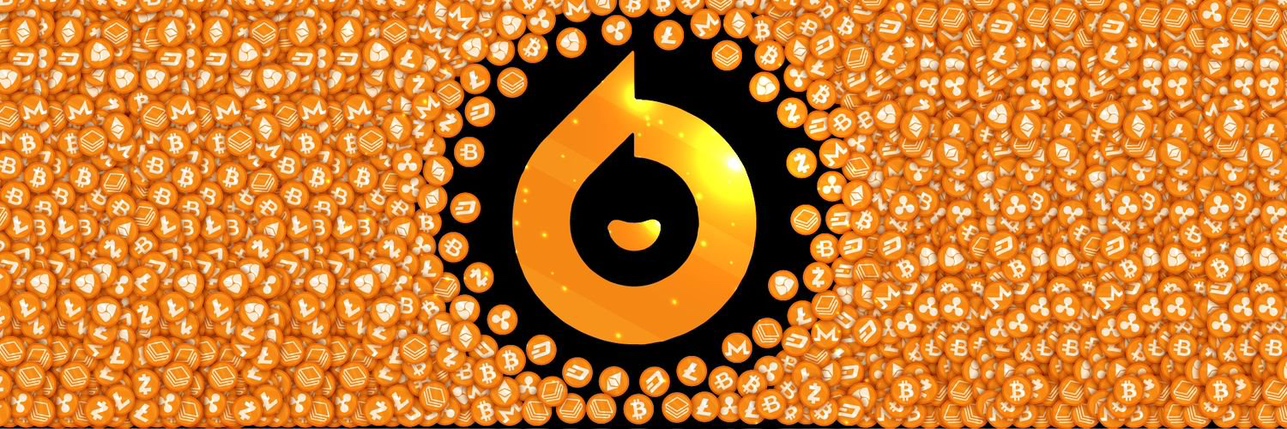
Gas narxiGAS
GAS dan UZS ga konvertori
UZSda bugungi Gas jonli narxi
Sizningcha, Gas narxi bugun oshadimi yoki tushadimi?
Gas bozor ma'lumoti
Gas (GAS) haqida
GAS nima?
Odatda NEOGas deb ataladigan GAS NEO blokcheynining ajralmas tarkibiy qismidir, bu platforma, ko'pincha Xitoyning Ethereumga javobi deb nomlanadi. NEO tarmog'i boshqaruv huquqlarini tarmoqdan foydalanish huquqlaridan ajratishni maqsad qilgan dual token mexanizmini qabul qilishi bilan noyobdir. NEO boshqaruv jihatini ifodalasa, GAS NEO tarmog'idagi turli faoliyatlarni osonlashtiradigan operatsion tokendir. Ethereum platformasidagi “gaz” tushunchasi singari, NEO ekotizimidagi GAS son-sanoqsiz operatsiyalarni to'lash uchun ishlatiladi, bu esa tarmoqning ravon ishlashi uchun muhim ahamiyatga ega.
NEO tarmog'ining “aqlli iqtisodiyot” haqidagi tasavvurlari uning ikki tokenli tizimi bilan asoslanadi. Umumiy ta'minot bilan 100 million, NEO token egalari blokcheynning operatsiyalarini nazorat qiladigan Neo qo'mitasi uchun ovoz berib, boshqaruvda ishtirok etishga imkon beradi. Boshqa tomondan, ishlov berilgan har bir blok bilan ishlab chiqariladigan GAS tranzaksiya to'lovlarini to'lash va NEO tarmog'ida aqlli shartnomalarni joylashtirish uchun ishlatiladi. Ushbu ikkitomonlama tizim boshqaruvning markazlashtirilmaganligini ta'minlaydi, tarmoq esa tezkor va samarali bo'lib qoladi.
Manbalar
Rasmiy hujjatlar: htt ps://docs.neo.org/docs/en-us/index.html
Rasmiy veb-sayt: https://neo.org/
GAS qanday ishlaydi?
NEO tarmog'i tokenlar va aqlli shartnomalarni ishlatish va saqlash uchun GASni haq sifatida oladi. Ushbu mexanizm tugun resurslarini potentsial suiiste'mol qilishning oldini oladi. Yig'ilgan tizim to'lovlari yoqib yuborilib, GASga deflyatsion jihatni ta'minlaydi. Ayni paytda, tarmoq to'lovlari konsensus tugunlariga qayta taqsimlanib, ularga tarmoqning yaxlitligi va samaradorligini saqlab qolish uchun iqtisodiy rag'bat beradi.
GAS tarmoq tomonidan aniqlangan tezlikda ishlab chiqariladi. Masalan, har blokda 5 ta GAS tokenlari hosil qilinadi va bu turli nisbatlarda taqsimlanadi. GASning eng katta qismi saylovchilarga berilib, ularni tarmoq boshqaruvidagi faol roli uchun mukofotlanadi. Ushbu tizim nafaqat ishtirok etishni rag'batlantiradi, balki tarmoqning qaror qabul qilishda hissa qo'shuvchilarning munosib ravishda mukofotlanishini ta'minlaydi.
GAS tokeni nima?
GAS Neo Foundation tomonidan yaratilgan ikkita tokendan biridir. Uning asosiy vazifasi NEO tarmog'i uchun yordam ma'lumoti sifatida xizmat qilishdir. GAS tranzaksiya to'lovlarini to'lash va aqlli shartnomalarni joylashtirish uchun ishlatiladi. Bo'linmas bo'lgan NEOdan farqli o'laroq, GAS bo'linadigan bo'lib, uni tarmoqdagi mikrotranzaktsiyalar uchun mos qiladi.
NEO-ni muayyan hamyonlarda ushlab turish orqali foydalanuvchilar GASni dividend shakli sifatida ishlashlari mumkin. Ushbu steyking mexanizmi NEO egalariga daromad olish uchun qo'shimcha imkoniyat taqdim etadi, bu esa NEO ekotizimini boshqaruvda ishtirok etish va passiv daromad yaratish uchun jozibador qiladi.
GAS narxini nima aniqlaydi?
Doimiy rivojlanayotgan Web3 landshaftida NEO tarmog'idagi asosiy token bo'lgan GAS narxiga blokcheyn dinamikasi va tashqi bozor sharoitlarida ildiz otgan son-sanoqsiz omillar ta'sir qiladi. Uning asosiy qismida, barcha aktivlar singari, GAS narxini aniqlashda taklif va talab tamoyili muhim rol o'ynaydi. Kriptovalyutani qabul qilish kuchayib, NEO tarmog'i tortishish sari GASga bo'lgan talab sezilarli o'zgarishlarni ko'rishi mumkin. Kriptovalyuta jadvallari va kriptovalyuta tahlili bu siljishlar haqida tushuncha beradi, ko'pincha so'nggi yangiliklarning ta'sirini ta'kidlaydi, kriptovalyutani tartibga solish o'zgarishlaridan tortib blokcheyn makonidagi so'nggi ishlanmalarga qadar.
Kriptovalyuta olamining o'ziga xos belgisi bo'lgan bozorning o'zgaruvchanligi kriptovalyuta narxlari bashoratini yanada murakkablashtiradi. Kriptovalyuta xavfi, xavfsizlik tashvishlari va kriptovalyuta tendentsiyalari kabi omillar to'satdan va dramatik narxlarning o'zgarishiga olib kelishi mumkin. Masalan, agar 2023 yil va undan keyingi yillarda eng yaxshi kripto sarmoyasi GAS kabi tokenlar deb e'lon qilinsa, u talabning oshishiga olib kelishi va uning narxiga ta'sir qilishi mumkin. Mohiyatan olganda, NEO tarmog'ining ichki mexanikasi va blokcheyn tamoyillari GASning asosiy qiymatiga rahbarlik qilsada, tashqi omillar, kriptovalyutani tartibga solishdan Web3 domenidagi so'nggi shovqinlargacha, uning bozor narxini shakllantiradi.
Gas bo'yicha AI tahlili hisoboti
Gas narx tarixi (UZS)
 Eng past narx
Eng past narx Eng yuqori narx
Eng yuqori narx 
Gasning eng yuqori narxi qancha?
Gas ning eng past narxi qancha?
Gas narx bashorati
Qachon GASni sotib olish yaxshiroq? Hozir GASni sotib olishim yoki sotishim kerakmi?
Mashxur aksiyalar
Global Gas narxlari
Gas(GAS) qanday sotib olinadi

Bepul Bitget hisobingizni yarating

Hisobingizni tasdiqlang

GAS ni UZS ga konvertatsiyalang
TTSS
Gas ning hozirgi narxi qancha?
Gas ning 24 soatlik savdo hajmi qancha?
Gasning eng yuqori koʻrsatkichi qancha?
Bitget orqali Gas sotib olsam bo'ladimi?
Gas ga sarmoya kiritish orqali barqaror daromad olsam bo'ladimi?
Eng past toʻlov bilan Gas ni qayerdan sotib olsam boʻladi?
Tegishli kriptovalyuta narxlari
Gas (GAS) ni qayerdan sotib olsam bo'ladi?
Video bo'limi — tezkor tekshiruv, tezkor savdo

GAS dan UZS ga konvertori
GAS manbalar
Teglar:
Bitget Insaytlari




Savdo
Earn
GAS/USDT
SpotGAS/USDT
MarjaGAS/USDT
USDT-M FyuchersiBitgetda yangi ro'yxatga olingan tangalar narxi








